12 Kitchen Organizing Mistakes Experts Say to Avoid
Streamline the heart of your home by avoiding these common organizing pitfalls.
For many people, the kitchen is the heart of the home, which often means that it has the most stuff in it. From pots and pans to baking sheets and seasonal serving platters, this space can fill up with essentials fast. If you often add to your kitchen but rarely make any edits, it's possible the room is ready for an update. Before making any changes, though, it's important to be aware of some common kitchen organizing pitfalls experts say to avoid.
Meet the Expert
Tamar Prager, founder of tamarprager.com and host of the podcast The Paper Weight
Meredith Goforth, the founder of House of Prim
Anna Bauer, organizing expert and owner of Sorted by Anna
Related: Martha's Best Kitchen Organizing Tips Will Help You Make the Most of Your Space
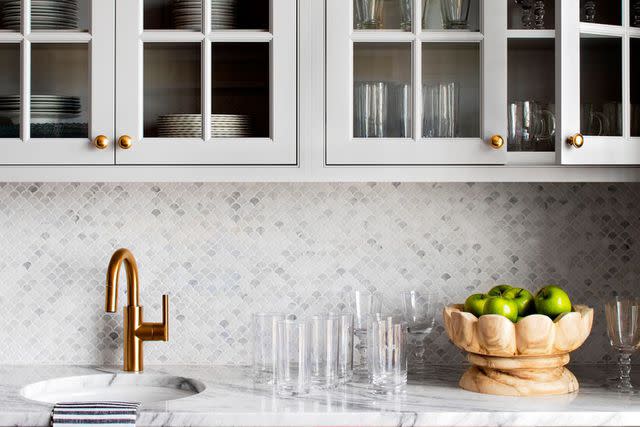
Jennifer Hughes
Not Having Designated Areas for Kitchen Items
If you are constantly putting your pots, pans, appliances, and other kitchen tools in different places, it's time to nail down a designated home for these items. "It feels easier in the moment to just place a serving spoon in a random drawer or cabinet, but you run the risk of forgetting where you placed it the next time you need it," says organizing expert Tamar Prager, founder of tamarprager.com and host of the podcast The Paper Weight. "When we take the time to decide where we want our items to live, and consistently return those items to that same place, cooking in the kitchen runs more smoothly and with ease."
Keeping Duplicates
Do you have multiple versions of the same kitchen tools? If so, consider editing your duplicates to make more room in your kitchen. While that doesn't mean you need to get rid of a sentimental casserole dish or your special occasion fine china, you can free up precious drawer space if you keep only one or two versions of the same item. "If there are two cheese graters that you use—one for lasagna and one for potatoes—keep both," says Prager. "But if you find that you have four of the same item and three of them never get used, it makes sense to donate them if they’re still in working order."
Organizing Based on Aesthetics
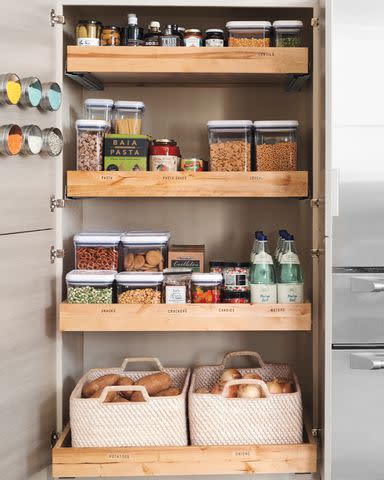
As one of the most frequently used rooms in your home, it's normal to want your kitchen to look nice. But don't sacrifice functionality for aesthetics. "We need our kitchen space to work for us," says Prager. "Ask yourself the following questions to get a clear sense of how the space needs to serve you: What do I do most often in this space? Cook? Help my kids with their homework? What are the things that I use most that require easy access? What things do I rarely use that can be moved?" Once you answer those questions, you'll have a better idea of how to organize your kitchen in a way that works for you.
Storing Miscellaneous Household Items in Your Kitchen
Your kitchen can easily become a destination for a variety of items in your house, whether they relate to your kitchen or not. While a junk drawer is perfectly fine to have, regularly editing it will keep it from getting out of control. "If there’s one random drawer where the scotch tape, rubber bands, and takeout menus live—I see no problem with that," says Meredith Goforth, the founder of House of Prim. "The problem comes when the junk drawer grows into a catch all for things that really belong somewhere else, and you lose visibility into what you have."
Purchasing Organizers Without Planning
One of the most common kitchen organizing mistakes people make is buying a collection of organizers and then later deciding how to fill them, says Goforth. "The cost of this mistake
can look like the wasted space of an oversized container for a small item, or the mess of overflowing containers," says Goforth. "When the size of drawer organizers perfectly matches the items they house, it gives the entire drawer a custom high-end aesthetic."
Misusing Vertical Space
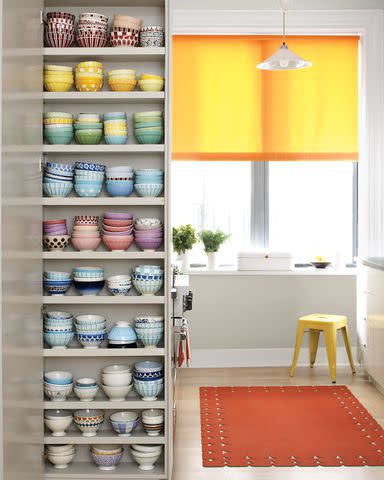
Give your cabinets new life by making use of vertical space, rather than just laying everything flat. The key to utilizing vertical space is adding additional levels to each shelf to fill any dead space, says Goforth. "There are so many products to accomplish this—from additional shelves to hanging racks for the undersides of cabinets. It’s important to thoughtfully pick the best one for you based on measurements and specific utility," she says.
Losing Visibility of Back Cabinets
No matter what area of your home you're organizing, having complete visibility of the space is essential. If you can't see items in the back of your cabinets, this may lead to purchasing duplicates or leaving expired items in your pantry for too long. "Try to stack any organizers vertically rather than one in front of the other, so each category has visibility from the front view," says Goforth. "If visibility is limited, it’s always worth adding a label—no matter how obvious it seems."
Putting Reusable Containers on a High Shelf
If you have a lot of food storage containers, you know how challenging it can be to keep them organized—especially as matching lids get lost and takeout containers are added to your collection. Make it easier to organize these containers by keeping them on a lower shelf. "Moving reusable containers down to a lower cabinet or in a bin if you have a kitchen cart or island," says Anna Bauer, organizing expert and owner of Sorted by Anna. "This ensures you can see what you have and it’s easily accessible."
Not Decanting
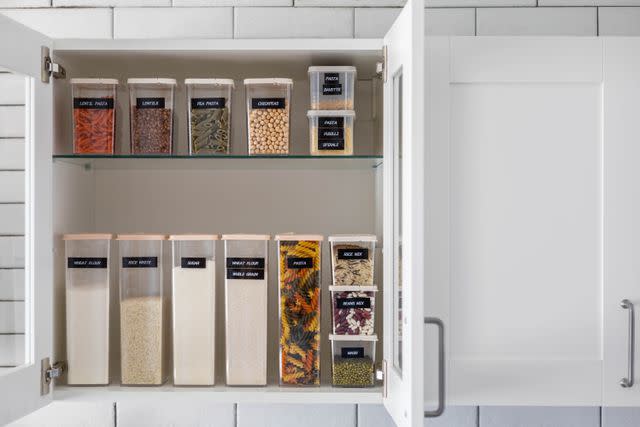
Kostikova / GETTY IMAGES
Rather than keeping bulky boxes and large containers of food that take up valuable space in your kitchen, consider decanting these items into clear bins instead. "Using a clear bin makes it easy to see when you’re running low and need to restock," says Bauer. "You can use plastic containers or glass jars."
Overfilling Drawers
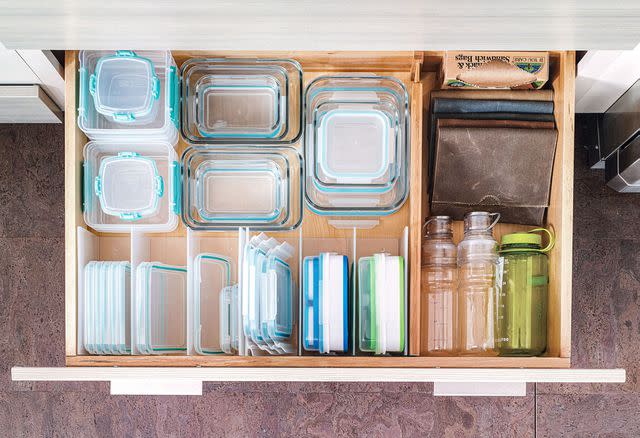
If you have a hard time opening and closing your kitchen drawers, consider moving things around to find a more desirable setup. "If a utensil drawer is too tight, pull out the items you use most often and store them on the counter in a utensil holder," says Bauer. It will help the drawer feel less tight, plus having utensils in an easy-to-reach spot means cooking goes faster.
Putting Frequently Used Items Out of Reach
Make sure all of your most used kitchen items are within reach. "We often see a kitchen set up in ways that no longer serve our clients," says Bauer. "Families who rarely bake have baking tins, flour, and mixers in prime real estate or coffee mugs are on the opposite side of where the coffee maker is." Fix this by ensuring the kitchen appliances and tools you use most often are placed in lower cabinets, while anything that is used seasonally or not as often is kept higher up.
Not Keeping Like With Like
Everything in a kitchen has a category, says Bauer. Therefore, the best way to organize your kitchen is to keep items that fall into the same category together, rather than separate. "Set up your drawers and cabinets with similar items," she says. "This helps ensure that when you’re going to find your can opener it’s not tucked away with your wine glasses."
Read the original article on Martha Stewart.

